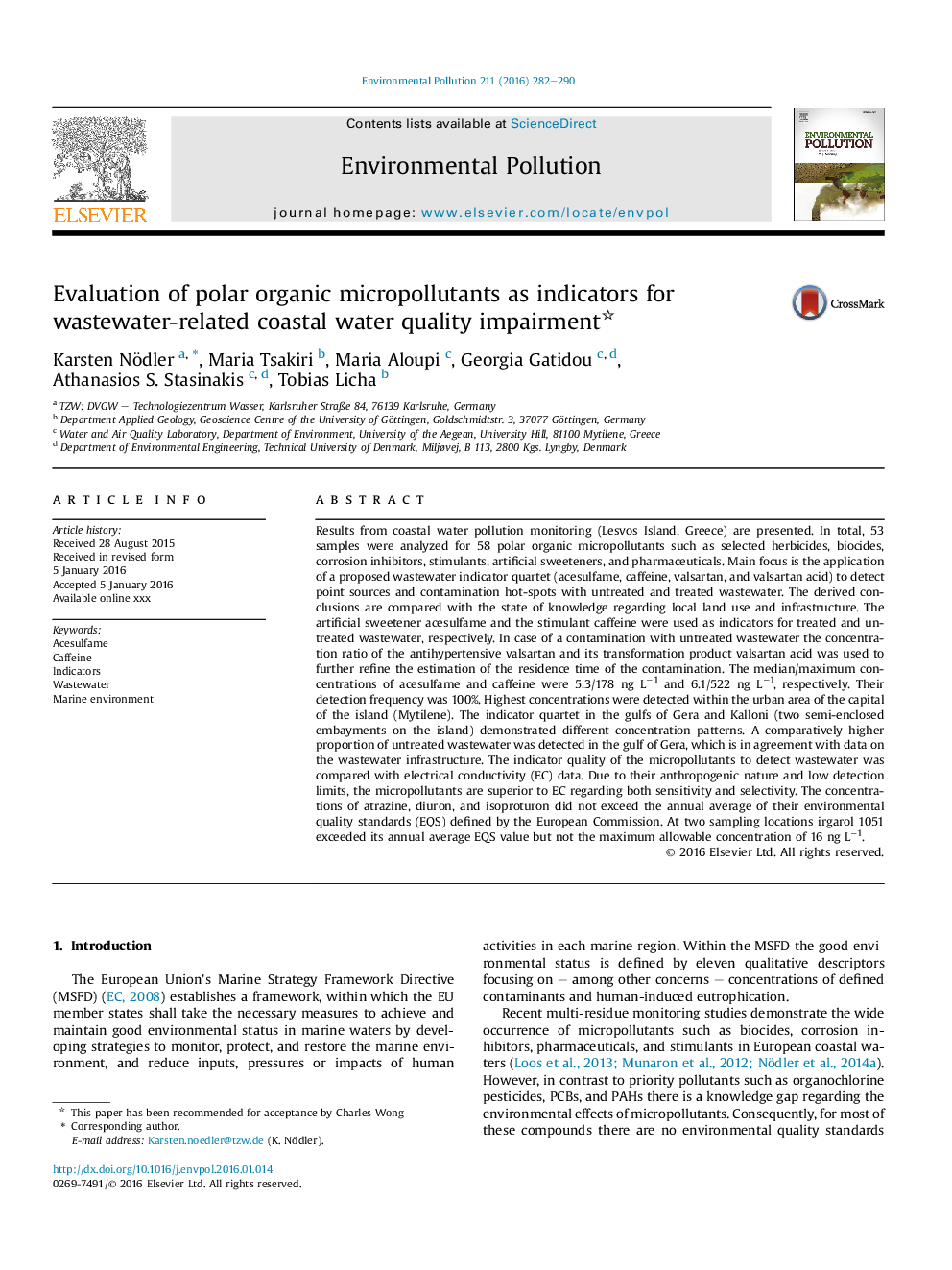| کد مقاله | کد نشریه | سال انتشار | مقاله انگلیسی | نسخه تمام متن |
|---|---|---|---|---|
| 6315519 | 1619162 | 2016 | 9 صفحه PDF | دانلود رایگان |
عنوان انگلیسی مقاله ISI
Evaluation of polar organic micropollutants as indicators for wastewater-related coastal water quality impairment
ترجمه فارسی عنوان
ارزیابی مخلوط های خاکستری آلی قطبی به عنوان شاخص هایی برای کاهش کیفیت آب های ساحلی مربوط به فاضلاب
دانلود مقاله + سفارش ترجمه
دانلود مقاله ISI انگلیسی
رایگان برای ایرانیان
کلمات کلیدی
اتسفلمه، کافئین، شاخص ها، فاضلاب، محیط دریایی،
موضوعات مرتبط
علوم زیستی و بیوفناوری
علوم محیط زیست
شیمی زیست محیطی
چکیده انگلیسی
Results from coastal water pollution monitoring (Lesvos Island, Greece) are presented. In total, 53 samples were analyzed for 58 polar organic micropollutants such as selected herbicides, biocides, corrosion inhibitors, stimulants, artificial sweeteners, and pharmaceuticals. Main focus is the application of a proposed wastewater indicator quartet (acesulfame, caffeine, valsartan, and valsartan acid) to detect point sources and contamination hot-spots with untreated and treated wastewater. The derived conclusions are compared with the state of knowledge regarding local land use and infrastructure. The artificial sweetener acesulfame and the stimulant caffeine were used as indicators for treated and untreated wastewater, respectively. In case of a contamination with untreated wastewater the concentration ratio of the antihypertensive valsartan and its transformation product valsartan acid was used to further refine the estimation of the residence time of the contamination. The median/maximum concentrations of acesulfame and caffeine were 5.3/178 ng Lâ1 and 6.1/522 ng Lâ1, respectively. Their detection frequency was 100%. Highest concentrations were detected within the urban area of the capital of the island (Mytilene). The indicator quartet in the gulfs of Gera and Kalloni (two semi-enclosed embayments on the island) demonstrated different concentration patterns. A comparatively higher proportion of untreated wastewater was detected in the gulf of Gera, which is in agreement with data on the wastewater infrastructure. The indicator quality of the micropollutants to detect wastewater was compared with electrical conductivity (EC) data. Due to their anthropogenic nature and low detection limits, the micropollutants are superior to EC regarding both sensitivity and selectivity. The concentrations of atrazine, diuron, and isoproturon did not exceed the annual average of their environmental quality standards (EQS) defined by the European Commission. At two sampling locations irgarol 1051 exceeded its annual average EQS value but not the maximum allowable concentration of 16 ng Lâ1.
ناشر
Database: Elsevier - ScienceDirect (ساینس دایرکت)
Journal: Environmental Pollution - Volume 211, April 2016, Pages 282-290
Journal: Environmental Pollution - Volume 211, April 2016, Pages 282-290
نویسندگان
Karsten Nödler, Maria Tsakiri, Maria Aloupi, Georgia Gatidou, Athanasios S. Stasinakis, Tobias Licha,
